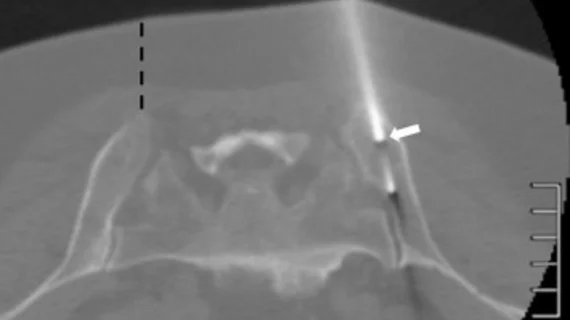CT guided bone marrow biopsies cost 13 times more than non-image guided procedures, without improving specimen quality
Providers are more frequently utilizing computed tomography to guide bone marrow aspirate and biopsy (BMAB) procedures. Though both image-guided and bedside procedures can achieve the same results, one method costs patients and providers significantly more.
A new analysis in Clinical Imaging offers a thorough overview of the factors that influence providers’ decision to utilize image guidance and how they affect expenditures overall. Through this, experts found that the cost of CT guided BMAB is nearly 13 times higher than the same procedure without image guidance.
“Image guided BMAB performed by radiology utilizes additional resources such as computed tomography, radiologist/technologist time, post-anesthesia care unit recovery, nursing and sedation medications," corresponding author, Jim S. Wu, with the department of radiology at Beth Israel Deaconess Medical Center in Boston, and colleagues explained. "These additional resources can be costly and can shunt or delay care for patients needing interventional radiology services.”
Although the overall burden of BMABs has not increased substantially since the early 2000s, the use of image guidance to complete the procedure has. Between 2005 and 2016, image-guided BMAB increased nearly fourfold, the group noted.
This latest work, which focused on a more recent timeframe (2013 to 2022), examined what factors contribute to the decision to utilize image guidance and whether doing so resulted in superior specimen quality. In total, 301 CT and 317 non-image guided BMABs were included in the analysis.
In terms of what prompted providers to use image guidance, patients having a larger body habitus, especially those with greater skin-to-bone distances, were the main contributors, accounting for nearly 48% of referral indications. Failed attempts were next in line, at 18.8%, while 16.1% cited pain management and another 17.4% of referrals did not give a reason.
Although the specimen quality observed in each group did not differ, the costs associated with each method did. The cost of a CT guided BMAB with conscious sedation was $3,945 versus $310 for non-image guided—a 12.7 fold difference.
The group noted that the procedure would cost less without the use of conscious sedation. However, many of their patients were specifically referred for pain management reasons. In these cases, there are other options providers could utilize to reduce costs.
Completing the procedure with manual devices, rather than battery powered ones (the ones in this study were battery powered), and using ultrasound or fluoro instead of CT when feasible could all contribute to lowering overall expenses associated with BMAB, the group suggested.
The team acknowledged that in some cases, such as those associated with greater skin-to-bone distances, the additional costs of image guidance are likely justified. However, they suggested that providers should consider alternatives to CT guidance when the referrals are related to pain management.
The study abstract is available here.

